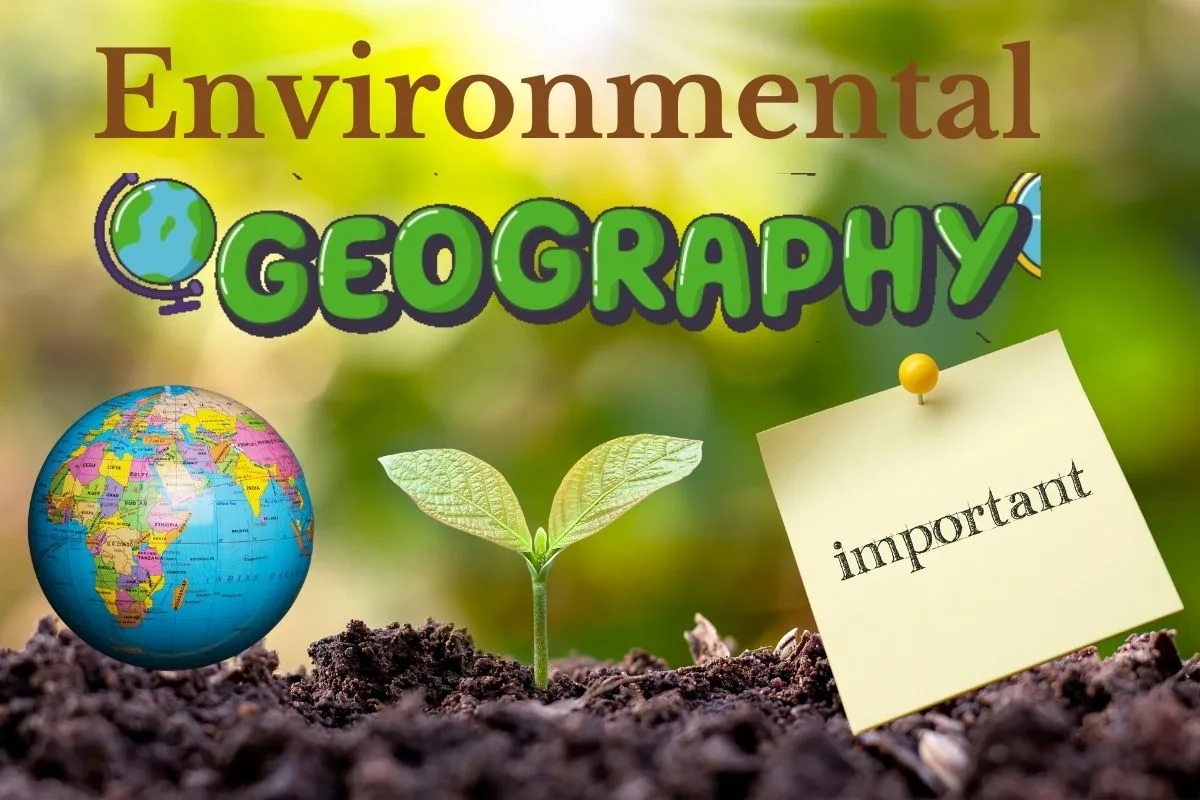Environmental geography is a subfield of geography that focuses on the spatial patterns and interactions between human societies and their environment. It plays a crucial role in understanding the complex relationships between people and their surroundings.
Here are some key aspects highlighting the importance of environmental geography
1. Sustainability:
Environmental geography provides insights into the sustainable use of natural resources. It helps identify patterns of resource exploitation and depletion, guiding efforts to develop sustainable practices for the long-term well-being of both the environment and human societies.
2. Climate Change:
Understanding the geographical distribution of climate patterns, as well as the impacts of human activities on climate change, is essential. Environmental geography contributes to climate research, helping policymakers and communities develop strategies to mitigate and adapt to climate change.
3. Biodiversity Conservation:
Environmental geography plays a critical role in the study of ecosystems, biodiversity, and conservation. It helps identify areas of high biodiversity, understand the factors influencing species distribution, and develop conservation strategies to protect endangered species and ecosystems.
4. Land Use Planning:
Knowledge of environmental geography is vital for effective land use planning. It helps assess the suitability of different areas for agriculture, urban development, or conservation. This, in turn, contributes to sustainable land management practices.
5. Natural Disasters:
Environmental geography aids in the analysis and understanding of natural disasters such as hurricanes, earthquakes, floods, and wildfires. This knowledge is crucial for developing early warning systems, emergency preparedness, and effective response strategies to minimize the impact of disasters on human lives and infrastructure.
6. Human-Environment Interaction:
Environmental geography examines the complex interactions between human societies and their environment. It helps to identify the impact of human activities on ecosystems and natural processes, fostering a better understanding of the consequences of these interactions.
7. Resource Management:
The distribution and availability of natural resources are key concerns for societies worldwide. Environmental geography provides insights into the spatial patterns of resource distribution, helping in the sustainable management of resources such as water, minerals, and energy.
8. Globalization and Environmental Justice:
Environmental geography sheds light on the unequal distribution of environmental resources and hazards across the globe. It contributes to discussions on environmental justice, highlighting the disparities in environmental conditions and advocating for fair and equitable access to resources.
9. Policy Development:
Policymakers rely on environmental geography to inform the development of effective environmental policies. This includes regulations related to pollution control, land use, conservation, and climate change mitigation.
10. Economic Impact:
Environmental geography contributes to understanding the economic implications of resource use and environmental degradation. It helps identify the economic value of ecosystems, such as the services provided by forests, wetlands, and oceans, which are often overlooked in traditional economic analyses. This knowledge is essential for sustainable economic development that takes into account the long-term health of the environment.
11. Urbanization and Megacities:
With the global trend of urbanization and the emergence of megacities, environmental geography plays a crucial role in studying the environmental challenges associated with rapid urban growth. It helps assess the impact of urbanization on ecosystems, air and water quality, and the development of green spaces within cities.
12. Cultural Geography:
Environmental geography is closely tied to cultural practices and beliefs. It explores how different cultures interact with and shape their environment. This understanding is crucial for addressing cultural perspectives on environmental issues and developing conservation strategies that respect and incorporate cultural diversity.
13. Transboundary Environmental Issues:
Many environmental challenges, such as air and water pollution, deforestation, and wildlife conservation, transcend political boundaries. Environmental geography provides a framework for studying and addressing these transboundary issues, fostering international collaboration and diplomacy in finding solutions.
14. Technology and Innovation:
Environmental geography is increasingly incorporating technology, including Geographic Information Systems (GIS), remote sensing, and satellite imagery. These tools allow for more accurate mapping and analysis of environmental phenomena, aiding in monitoring and managing natural resources and environmental changes.
15. Human Health:
The environment has a direct impact on human health, and environmental geography helps elucidate the connections between environmental factors and public health outcomes. It contributes to the understanding of diseases related to environmental conditions, such as waterborne illnesses, vector-borne diseases, and respiratory problems caused by air pollution.
16. Educational and Awareness Initiatives:
Environmental geography plays a key role in educating the public about environmental issues. Through educational programs and awareness initiatives, it helps promote a sense of environmental responsibility and encourages sustainable practices at both individual and community levels.
17. Ecosystem Services:
Environmental geography emphasizes the concept of ecosystem services, which are the benefits that humans derive from ecosystems, such as clean water, pollination of crops, and climate regulation. Recognizing and valuing these services is crucial for informed decision-making in resource management and conservation.
18. Crisis Response and Humanitarian Aid:
During environmental crises, such as natural disasters or environmental emergencies, environmental geography aids in understanding the geographical aspects of the crisis. This knowledge is vital for coordinating effective humanitarian responses, including the allocation of resources and the identification of vulnerable populations.
19. Resilience and Adaptation:
As societies face the challenges posed by climate change and environmental disruptions, environmental geography contributes to the development of resilience and adaptation strategies. This includes identifying areas prone to climate-related risks and implementing measures to enhance the resilience of communities and ecosystems.
20. Legal and Ethical Considerations:
Environmental geography contributes to the development of environmental law and ethics. It helps identify the geographical aspects of legal frameworks and ethical considerations related to environmental issues, guiding policymakers and stakeholders in creating just and sustainable policies.
Conclusion
Environmental geography is a multidisciplinary field with far-reaching implications for the well-being of the planet and its inhabitants. Its holistic approach, incorporating physical, human, and spatial dimensions, makes it an essential tool for addressing the complex challenges of the 21st century.

